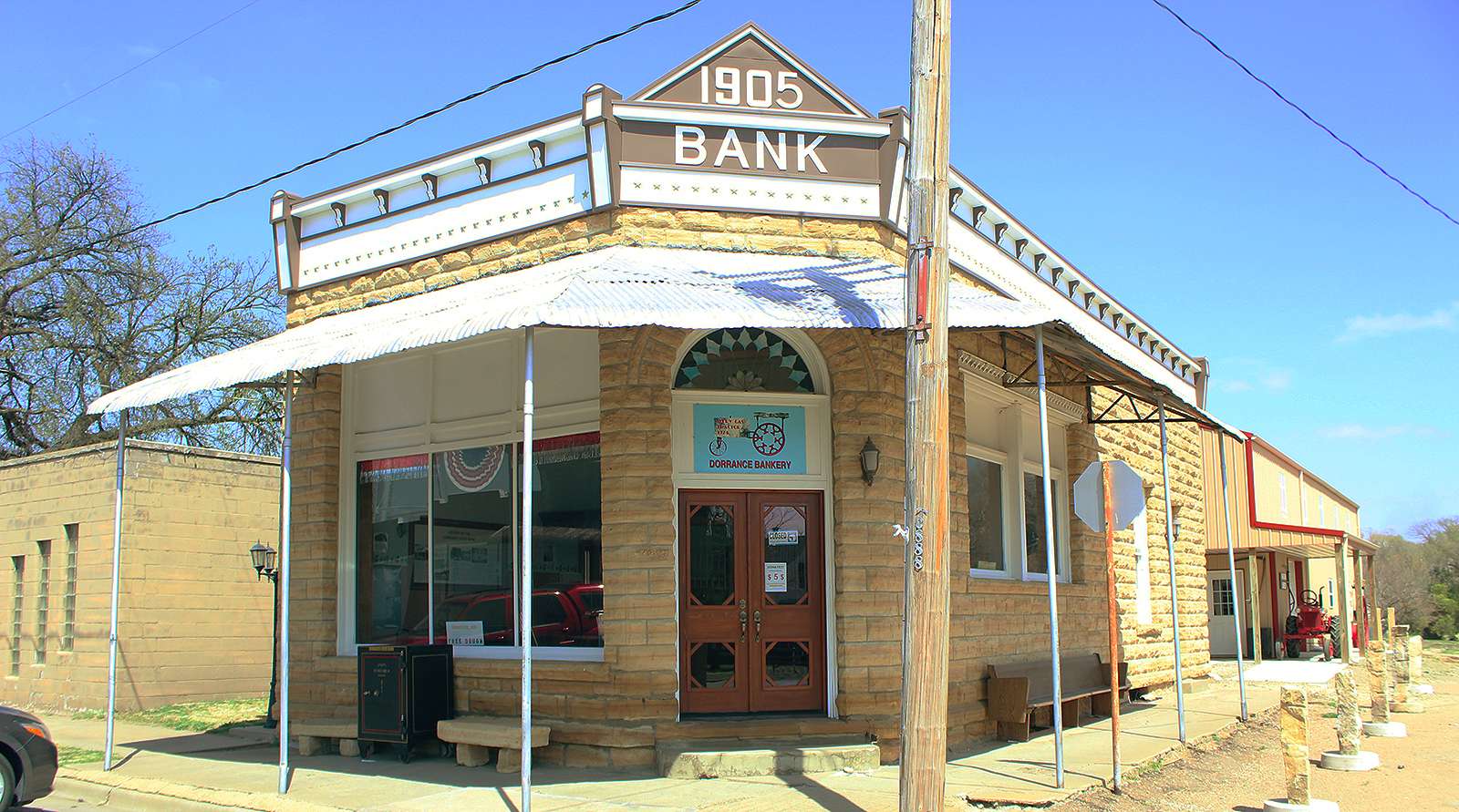
By CRISTINA JANNEY
Hays Post
DORRANCE — There's not much left in the little town of Dorrance — a few homes and old buildings that have been turned into boatsheds by the people hoping to frequent nearby Wilson Lake.
However, Dorrance was once a bustling farm community and whistle-stop for the Kansas Pacific Railroad.
One man is trying to preserve the community's history and his own family's past through a museum/eatery he calls the Dorrance Bankery.
On Saturday mornings, Tony Mahoney brings in baked goods made by a local home baker and invites local farmers or those whizzing by on Interstate 70 to pause awhile, sip some joe and tour the historic building.
Beginning May 14, Patsy D and her mobile barbecue of Russell will be offering barbecue over the lunch hour on Saturdays until the food is gone. Mahoney hopes this will entice more people to visit the bank and Dorrance.
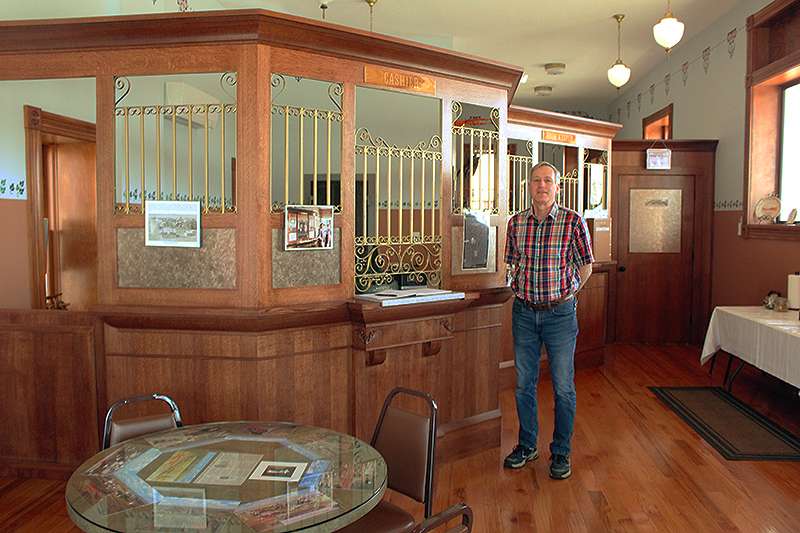
Many lives of the Dorrance Bank
The Dorrance State Bank was built in 1905. The bank closed in 1933 amid the Great Depression. In all, 9,000 banks failed during the 1930s. By 1933, depositors saw $140 billion disappear through bank failures, according to research presented by Mahoney on the Bankery's website.
The building in downtown Dorrance was used in a variety of capacities after it was closed as a bank.
The Fritcshen family operated the community's telephone service from the building and used the building as a residence. The telephone switchboard from Dorrance is still in existence and is on display at the Fossil Station Museum in Russell.
During its time as a residence, what had been the bank vault was converted into a kitchen, which is still part of the building today.
When the modern telephone system came along, the building was converted into a small grocery store, which was operated by William and Arleen Huff. An attorney, Ray Coolidge of Russell, bought the building in 1981 and used it as an office until 1986.
The storefront was then used as a barbershop by Gerald Steinle for 21 years.
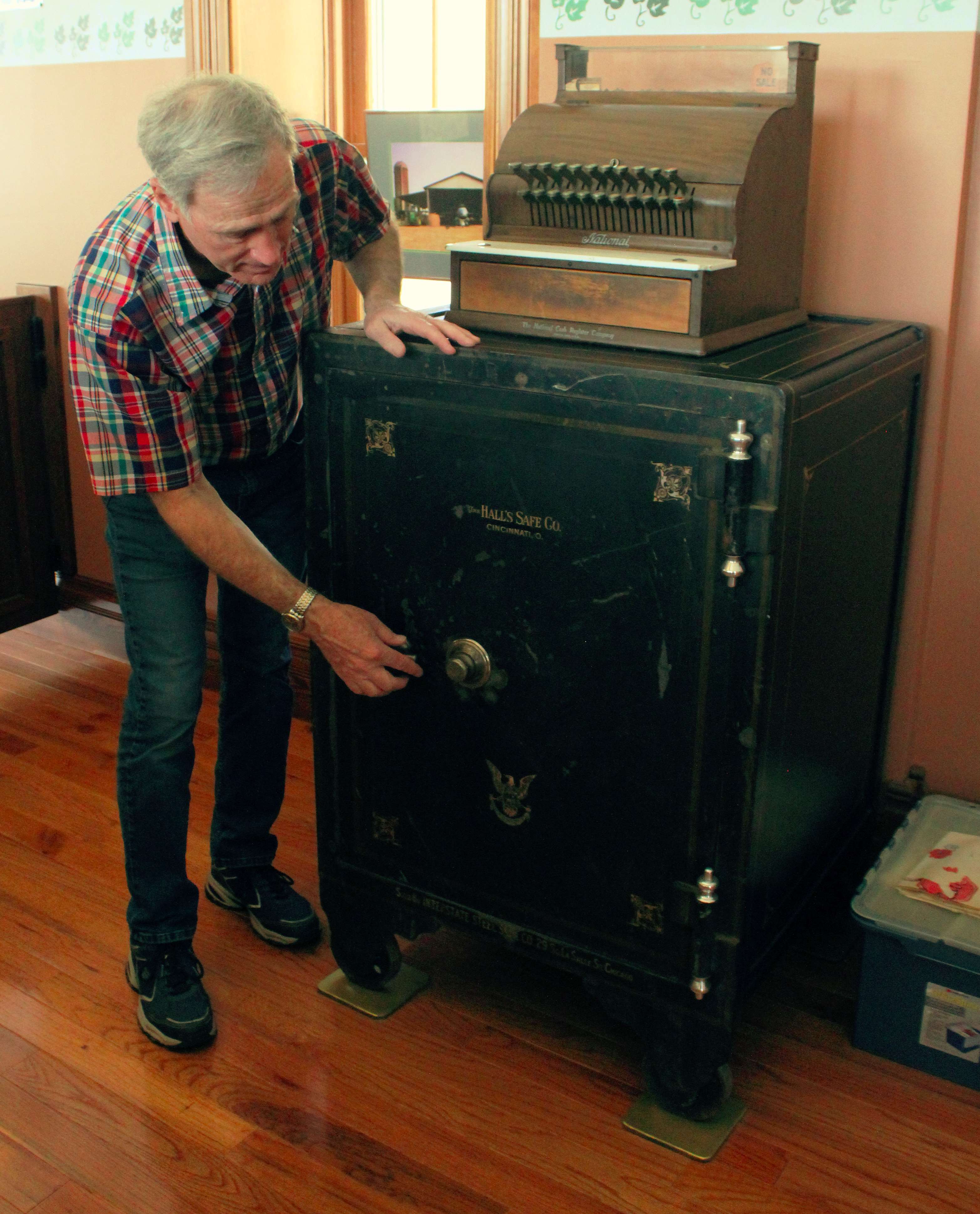
Saving history
In 2007, when the barbershop closed, Mahoney, a retired pilot, purchased the bank building and took on the monumental task of refurbishing it. He applied for historical status for the bank, which is now listed on the National Register of Historic Places.
"I think it's important just because we need to save our history," Mahoney said of the restoration.
Mahoney said he was drawn to the building because it is one of the few limestone structures still standing in the community. One of the others is the Rieff Building across the street. The Rieff Building was once owned by his father, who used it as a warehouse for his Toss Back company. His father eventually donated the Rieff Building to the Dorrance Historical Society.
Mahoney finished the bulk of restorations in 2021, but this will be the first full travel season the Bankery will be open for tours.
The building's historical status allowed Mahoney to apply for grant funds to restore the bank lobby as near as possible to what it was in the early 1900s. Most of the original fixtures in the building were missing, including the bank teller windows.
Mahoney was fortunate that during the early years of the bank a prolific photographer, Leslie Halbe, was active in the area. Glass plate negatives of photos from the Dorrance area, including photos of the bank, are still in existence. Halbe prints and digital images can be viewed at the Bankery.
Mahoney employed Russell carpenter, John Sechtem, to reconstruct the teller windows and counter. The restoration included bending and curling new ornate metal bars for the teller windows.
Mahoney handpainted the stencil border that once decorated the walls of the lobby. A vintage tin ceiling, although not original to the 1905 structure, was also uncovered and restored.
The original hardwood floors could not be saved, as portions of the floor were too badly damaged to be repaired. However, keeping with the building's character, Mahoney replaced the surface with new hardwood flooring.
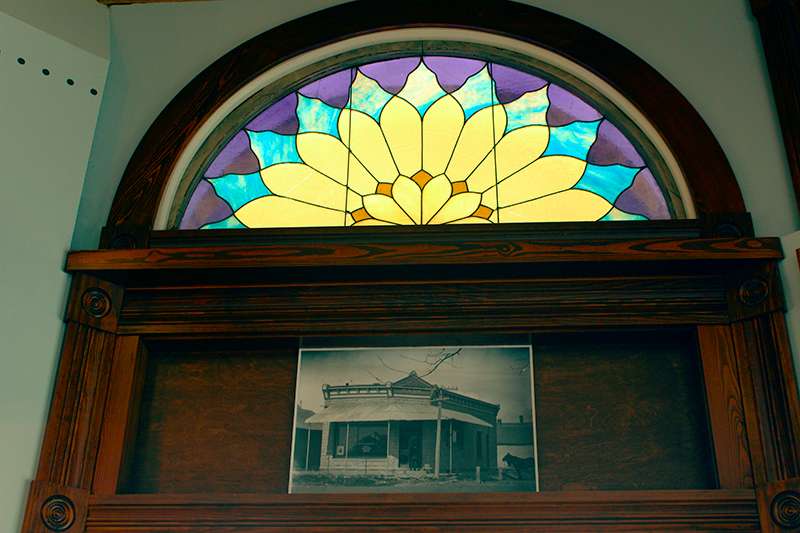
The traveling window
Perhaps one of the most interesting stories of the restoration came from what Mahoney calls the "traveling window." Mahoney was able to secure and reinstall the original stained glass window over the entrance of the bank.
However, the more than 100-year-old window took a few side trips before ending up back home in Dorrance.
One day years ago, a man stopped by the bank when Mahoney was working. He had been married to a member of the Huff family, which had since operated a grocery store out of the former bank. The man's step-daughter still had the original window for the bank.
The daughter had taken the window to Wyoming, but Tom, the step-father, retrieved the window and told Mahoney he would hold onto the glass for Mahoney until he was ready to reinstall it in the bank.
A couple of years went by. Mahoney called Tom, but he didn't answer. Mahoney drove to Russell and learned from a family member Tom had died. After a number of phone calls, he found the glass was back with Tom's step-daughter, who now lived in Montana.
Graciously, the daughter agreed to give the glass to Mahoney to be placed in the museum. Mahoney traveled to Laramie, Wyo., and drove the glass back to Dorrance, where it is now reinstalled in its original home above the door to the bank.
The window has a few minor cracks but is remarkably well preserved considering its age and travels, Mahoney said.
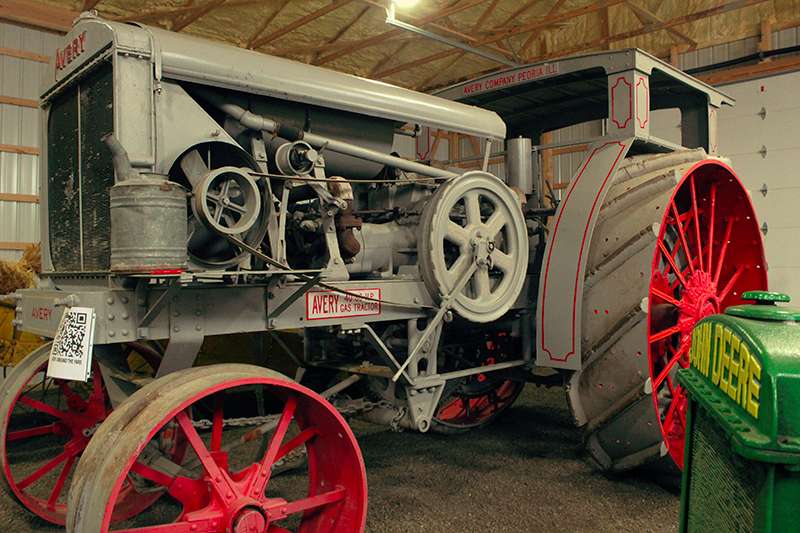
The Dorrance legacy
In addition to the restored bank lobby and memorabilia, Mahoney has displays highlighting other notable people and objects from Dorrance history.
"I thought we've got to get people off I-70 and stop in these little towns," Mahoney said. ... "That's my long-range object — to get people to come in here and see this stuff."
Mahoney has a display on his father, Ken Mahoney and his company, Toss Back Inc., which created the “Snap Back” breakaway basketball rim. The breakaway rim allows basketball players, including NBA professionals to dunk without shattering the back glass.
Another local man invented a golf hole cup that lifts out of the ground so sand can be easily dumped from it. Yet another local man invented an automobile hoist.
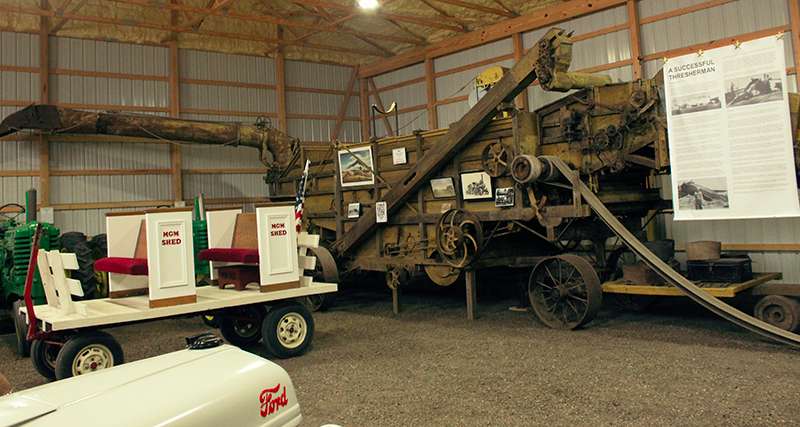
In an outbuilding, Mahoney has a display of antique tractors, including the world's largest Avery tractor and wheat threshing machine, both of which were owned and operated by his grandfather.
The Avery tractor had a brief appearance in "Paper Moon," portions of which were shot near Dorrance.
Mahoney said he also dreams of further renovating the Rieff building across the street, which once was an opera house. He said he would love that building, which is also on the historic register, to eventually be able to host shows again.
The Bankeries hours are 9:30 a.m. to 12:30 p.m. Saturdays and Sundays
You can learn more about Dorrance and the Bankery at https://dorrancebankery.com/ or follow the Bankery on Facebook.






